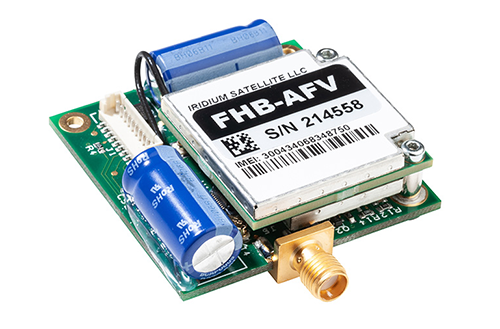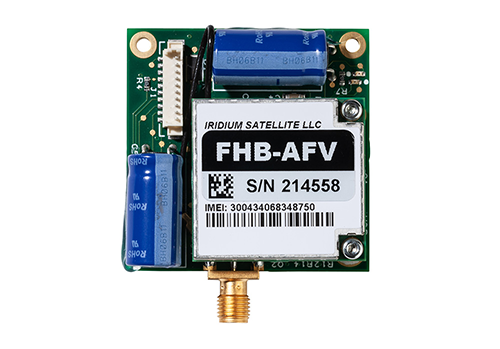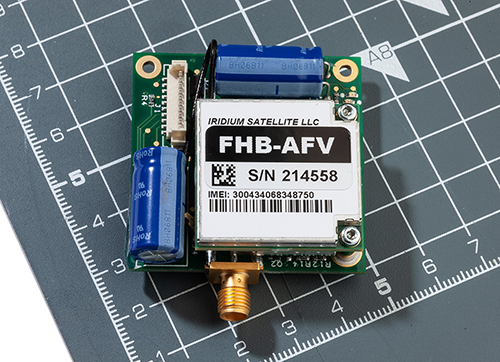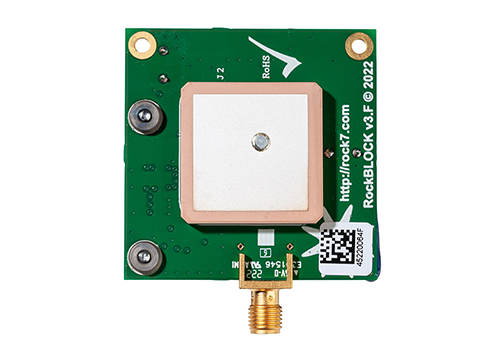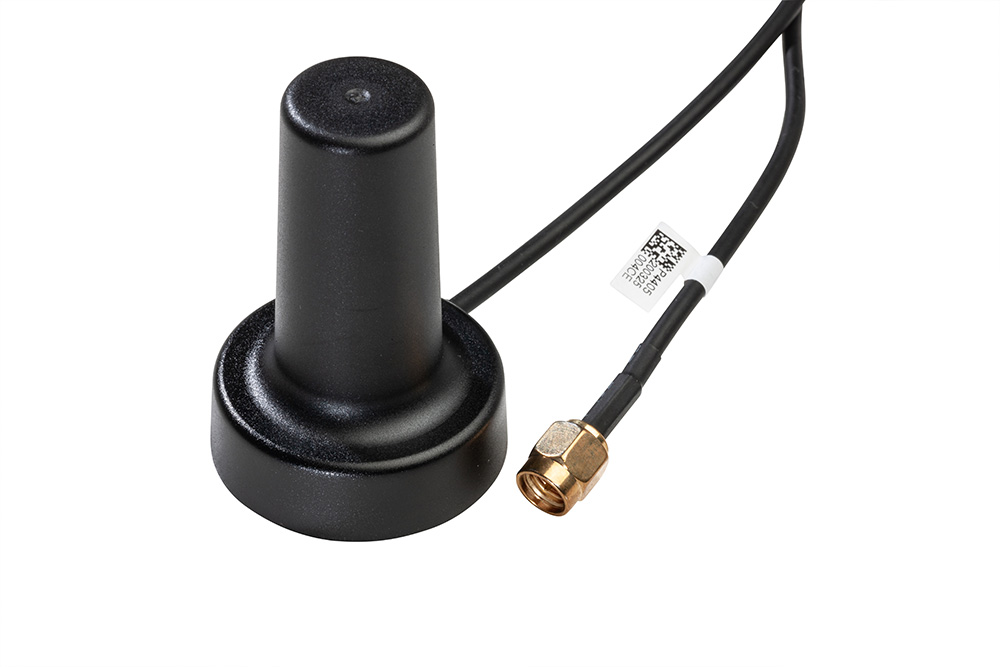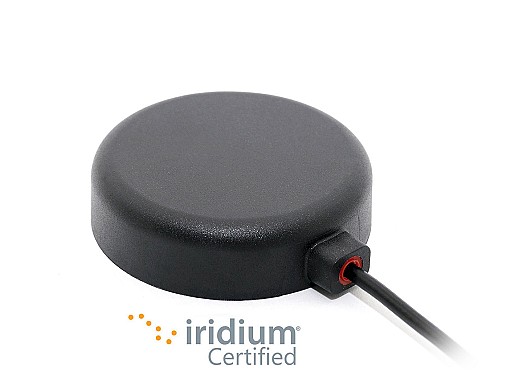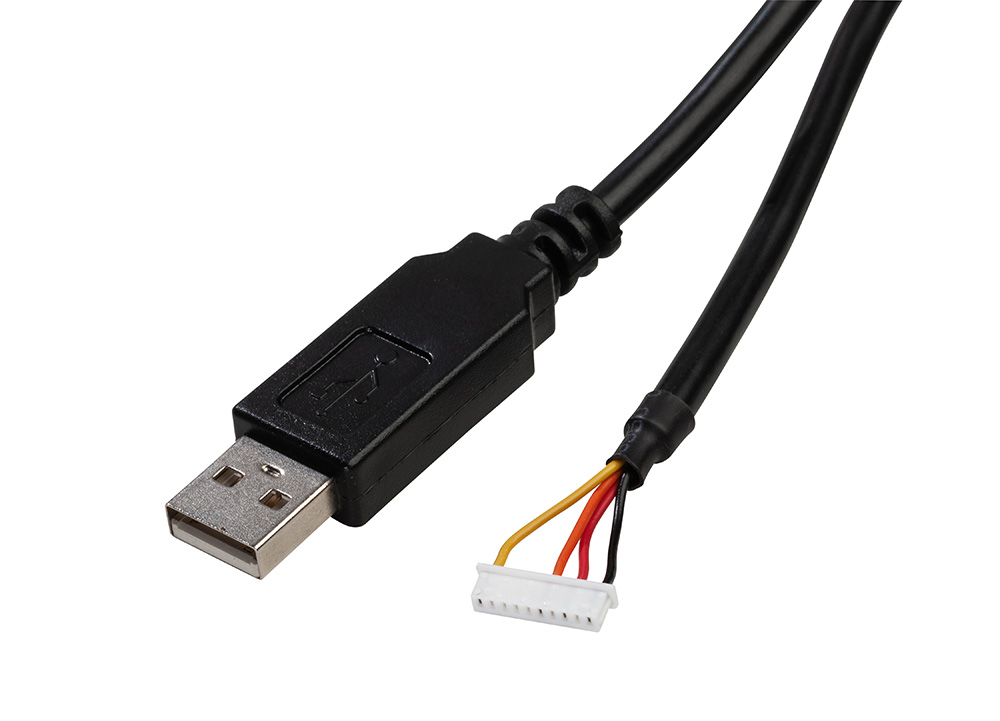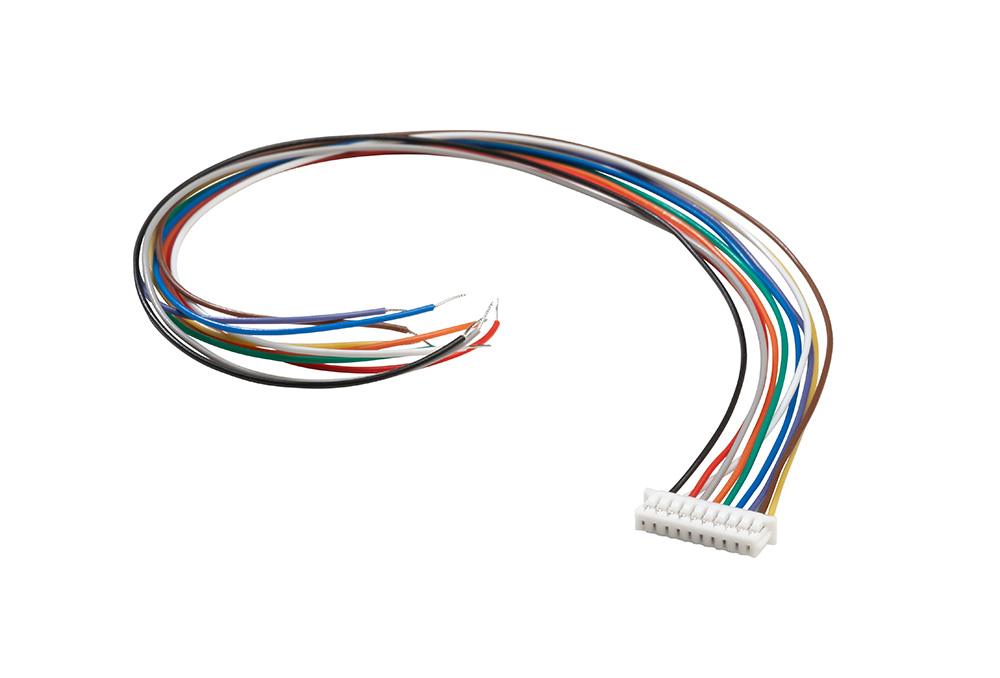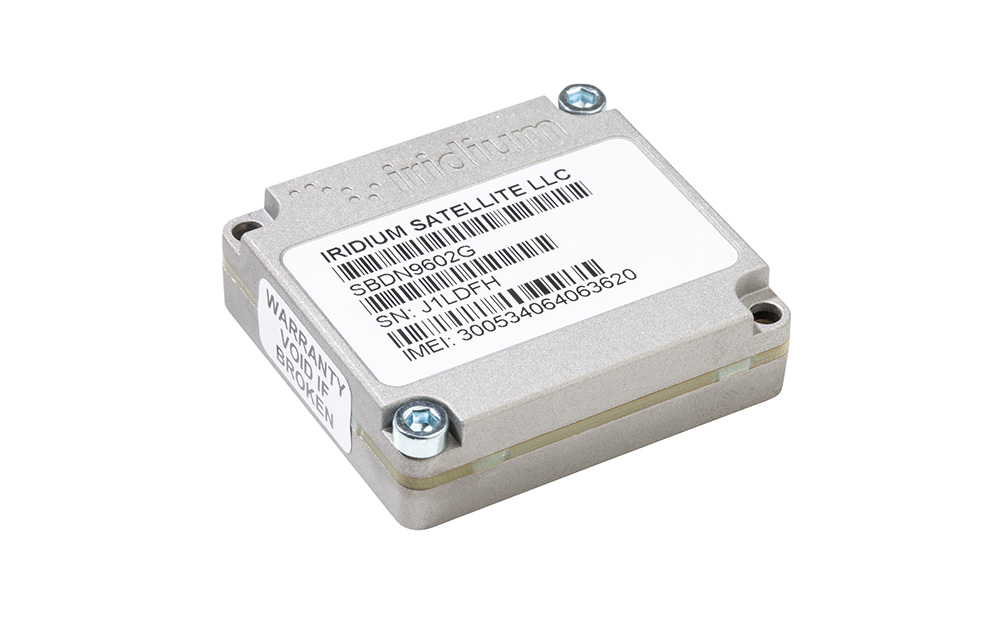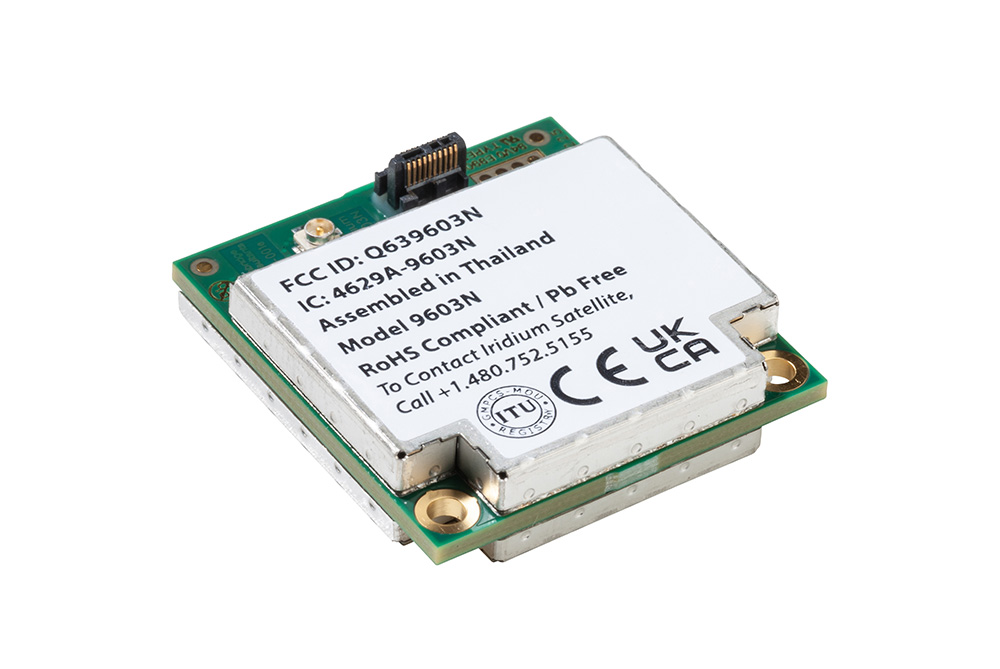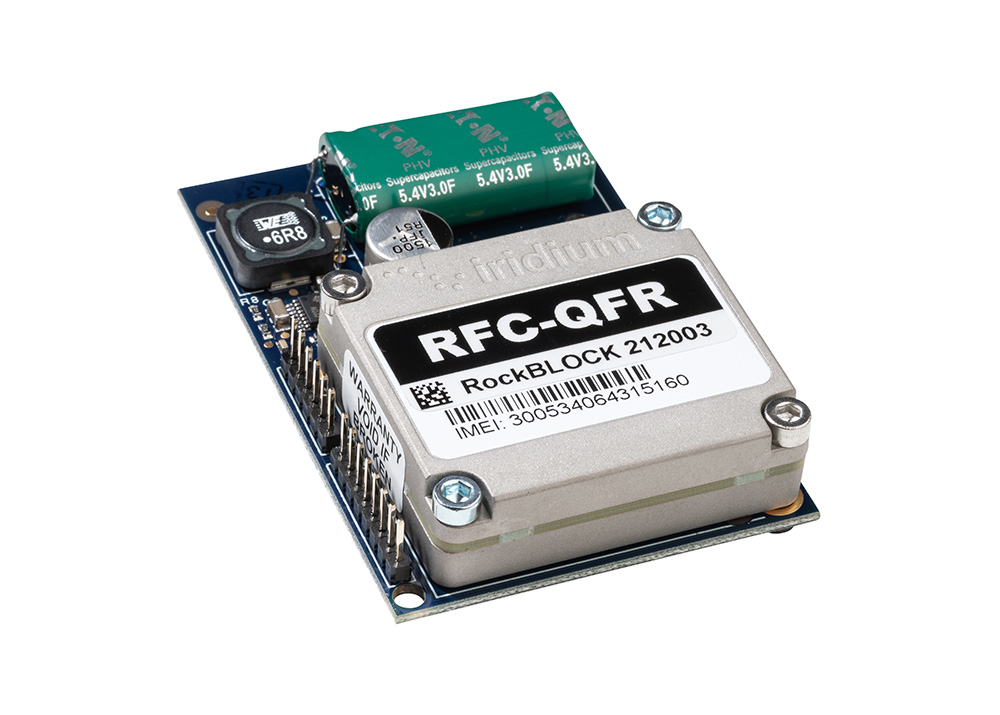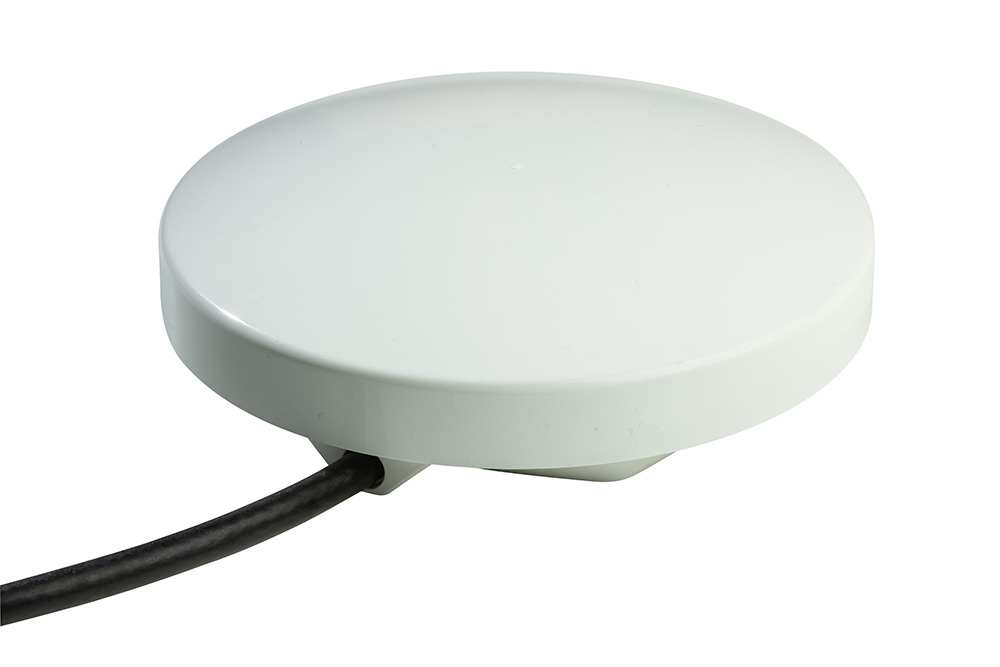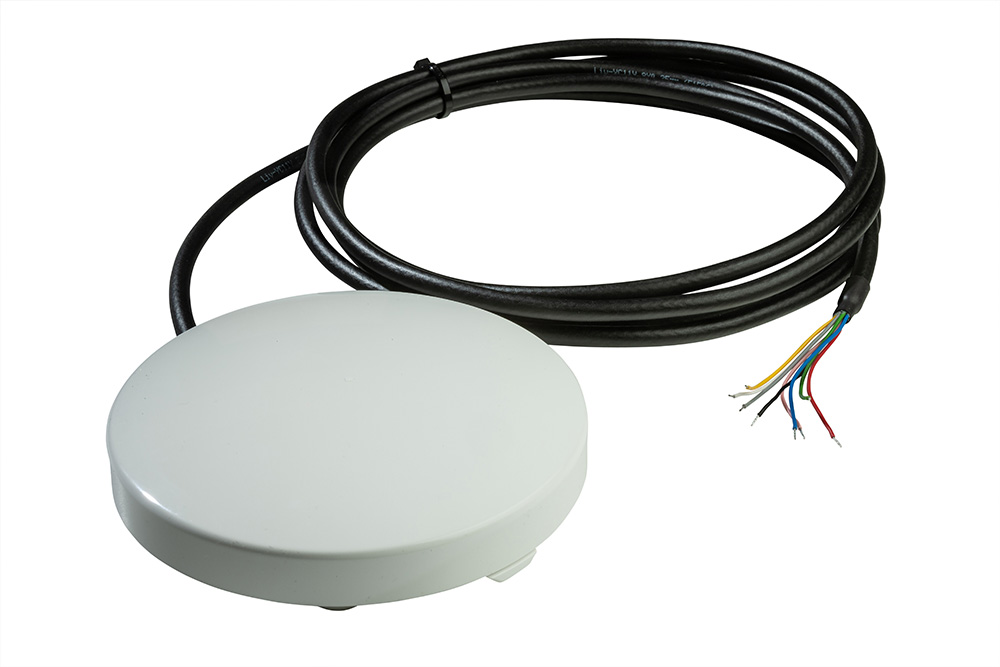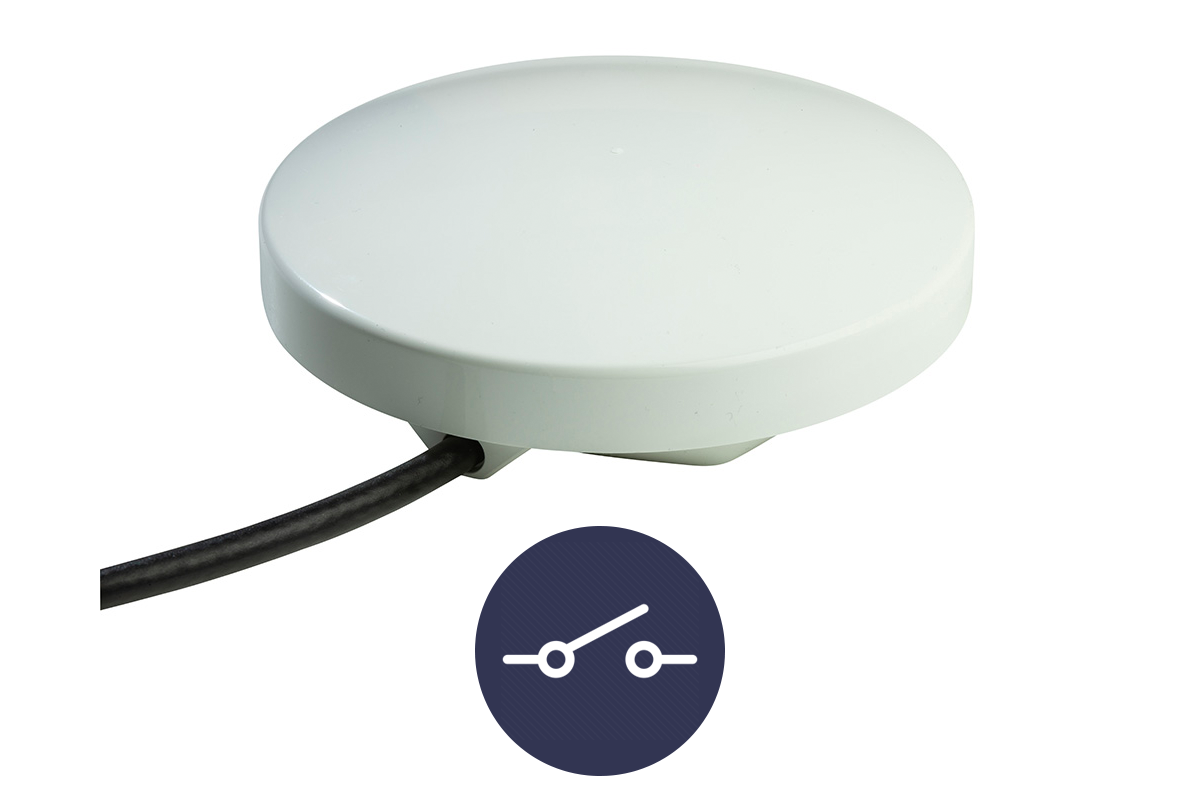Compact satellite IoT device
Designed for systems integrators and product developers, the RockBLOCK 9603 is a compact, robust piece of kit that can send and receive short messages from anywhere on Earth with a view of the sky.
RockBLOCK 9603 is the smaller version of RockBLOCK 9602 but with all the same capabilities. It has been designed to be as small and light as possible with a multitude of uses. It’s compatible with Arduino, Windows, Mac and Linux computers (including Raspberry Pi), and many other platforms with serial or USB ports.
The RockBLOCK 9603 has a small form factor Molex connector to link the serial, power, and signalling lines to your controller. This may be marginally harder to use for hobbyists than the 0.1″ dot pitch header used on the RockBLOCK 9602.
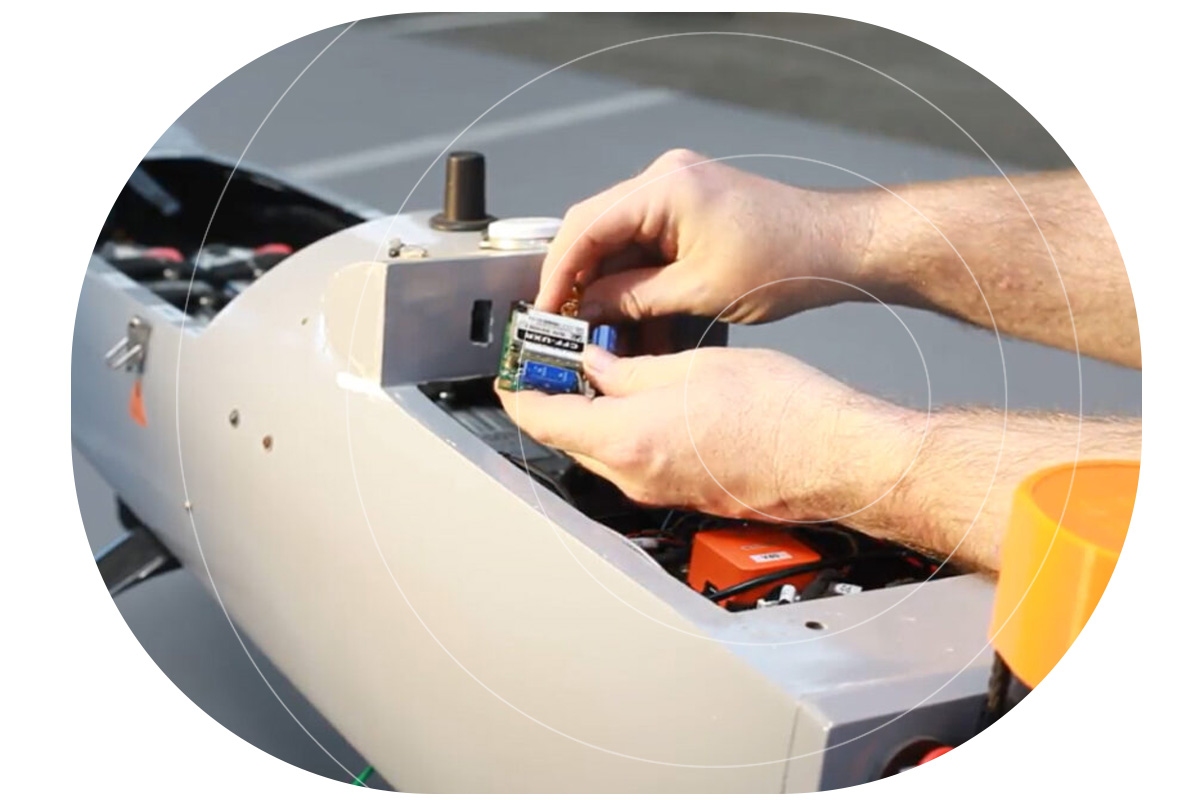
At the heart of RockBLOCK 9603 is an Iridium 9603N modem. The RockBLOCK hosts the 9603 and provides it with a patch antenna and its power supply requirements. It exposes the modem’s serial interface via a breakout connector over serial.
The patch antenna is suitable for applications where the RockBLOCK can ‘see’ the sky; for example, under plastic but close to the top of the enclosure. If the RockBLOCK will be situated deep within your enclosure or have a metal barrier between it and the sky, the optional SMA connector allows you to attach an external antenna.
RockBLOCK is an extremely flexible device. It’s being used in systems to monitor the health of honey bee populations; to transmit data from very remote weather stations; as part of control systems for unmanned vehicles, and much more. RockBLOCK isn’t a tracking device. If you need a tracking device, we would recommend the RockFLEET or Iridium Edge Solar.
- Plug and play satellite communication
- Full 2-way communication system
- Optional SMA connector, for external antenna
- Truly global operation, pole to pole
- Low latency; satellites are in Low Earth Orbit (<1 second)
- Uses the Iridium Short Burst (SBD) data service
- Available as a PCB for integration
- Integrated antenna and power conditioning
- Powered via USB or direct-header connection
- Data via e-mail or directly to your web-service
- Message size: 340 bytes transmit, 270 bytes receive
- Send / Receive frequency: Approximately once every 40 seconds
- Powered By Direct Header Connector (Molex 51021) or FTDI / USB
- Voltage required: 3.4-5.4V
- Power consumption: Max 450mA
- Sleep mode: Needs a minimum of 100mA for operation, but easily put to sleep to save power
- Follows AT commands for easy integration into your own software (view developer docs)
- Waterproofing: RockBLOCK 9603 is not waterproof. If you need a waterproof unit, look at the RockBLOCK Plus
- Built in 1621 Mhz tuned patch antenna (or use optional SMA connector for external antenna)
- Size: 45.0 x 45.0 x 15.0mm
- Mounting holes: two on PCB
- Weight: 36 grams including antenna
- Ideal For integration into existing devices
- Operating temperature: -45 to 85 degrees C
- Operating humidity: ≤ 75% relative humidity
*Important – please read this!*
We offer Short Burst Data airtime in two formats: a line rental plus pay-as-you-go option; and an annual contract option. The former is intended for development and testing; you will find that the annual contracts are more cost-effective once your project is fully operational. Please note that the costs below relate only to the line rental / pay-as-you-go option. To view annual contract pricing please visit our SBD pricing page.
Line rental is paid in blocks of 1 month, and allows the RockBLOCK to exchange information with the Iridium satellite network. You only pay for months in which you wish to use the RockBLOCK. No annual contract is required. Line rental costs $17.00 / £13.00 per month and includes access to The RockBLOCK management system for managing your devices.
Credits are used each time you transmit. 1 credit is used per tracking position or per 50 characters of message sent or received. 1 credit is also used if you check your mailbox and there are no messages waiting (A mailbox check). Credits do not expire unless you do not use your account at all for 12 months. Credits are shared/pooled between all of the devices on your account.
The RockBLOCK management system allows users to amend their account details, manage RockBLOCKs, top-up accounts, review invoice details, and set-up communication between HQ, individual devices and device groups.
Upon receiving your RockBLOCK(s), first time users will need to log on to our registration page: https://rockblock.rock7.com/Operations.
Having trouble registering?
If you are not registering new units, there’s a very high chance they have been already registered somewhere else. Contact help@groundcontrol.com, mentioning your RockBLOCK serial numbers and IMEIs so that we can look into the issue.

FAQs
We created the RockBLOCK to make it easy for developers and systems integrators to incorporate Iridium Short Burst Data satellite communications into their solutions.
As many developers have found, buying and integrating a 9603N transceiver directly is not trivial. We make it easier for you by dealing with the mechanical support, the strict power requirements, by adding a perfectly matched and tuned antenna (or you can connect an external one), and exposing the serial interface on a convenient header connector.
So you can buy just the module / transceiver (9603N) and do the work yourself, or you can buy a RockBLOCK for an additional £102 / $128 and just connect it up and start using it. It’s entirely up to you. We can help you with both if you want us to, and we also offer a pre-pay SBD airtime option so that developers can easily keep control of airtime usage in the early stages.
There are two key differences between the RockBLOCK 9602 and RockBLOCK 9603: the size and antenna options. The RockBLOCK 9603 is as small as we could get it with the board being the smallest size for the ground plane required for a 25mm patch antenna.
The 9603 version also has both the onboard patch antenna AND an SMA connector for external antenna use. We ship the unit with either of these wired up for use out of the box, but you can change this later on if you wish. Here’s how to change the antenna type on the RockBLOCK 9603.
The RockBLOCK 9602 can only be used with the onboard patch antenna OR the SMA connector – you can’t have both and can’t switch them after purchase. The 9602 is also larger than the 9603.
Functionally they’re identical in every way – it’s just the antennas, the modem used and the size that’s the key difference.
If you’re using the SBDRT command and the modem appears to ‘hang’ when you issue the command, it’s probably due to flow control configuration. The default state for the RockBLOCK and RockBLOCK Plus units has flow control turned ‘on’ in the modem. When running in 3-wire serial mode, flow control should be turned ‘off’, which will ensure you get responses to your requests.
Use the command AT&K0 at the start of your command sequence. This turns flow control off and should solve the problem.
The sleep signal is internally pulled high on the RockBLOCK and RockBLOCK Plus products, so you can leave it disconnected if you want to leave the modem ‘awake’ all of the time.
To turn ‘off’ the modem, pull the line to ground.
RockBLOCK 9603 uses the Iridium satellite network. Specifically, it uses an Iridium service called ‘short burst data’ (SBD). At the heart of RockBLOCK 9603 is an Iridium 9603N modem. The RockBLOCK hosts the 9603N and provides it with an antenna and its power supply requirements. It exposes the modem’s serial interface via USB (or directly – PCB assembly version only). Full documentation for the Iridium 9603N modem.
RockBLOCK 9603 takes its power from the direct header connector or alternatively via the optional FTDI/USB adaptor. If you’re using the PCB assembly version with a direct header, your host needs to supply a minimum of 100mA @ 5V.
340 bytes FROM RockBLOCK.
270 bytes TO RockBLOCK.
Testing shows that it generally takes around 20 seconds from power-up to successful transmission, with a perfect view of the sky. With a very restricted view, it may take several minutes.
You should be able to complete an Iridium SBD session roughly every 10 seconds, assuming a perfect view of the sky.
Yes. The RockBLOCK 9603 is shipped with both a patch antenna and an SMA connector (instead of the built-on antenna) which allows you to attach an external Iridium antenna. Choose which you prefer at checkout, and it’ll be wired up appropriately. You can change that at a later date if you choose – here’s documentation on how to change the antenna.
Almost certainly. If you have purchased the optional FTDI-USB adaptor, you’ll need to install the FTDI drivers. You can check on their website (http://www.ftdichip.com/FTDrivers.htm), where you’ll find drivers for Linux, Mac, Windows, Android and others.
The RockBLOCK 9603 appears as a serial interface, and you can talk to it using a simple set of AT commands. It is expected that you’ll be able to integrate it into your own software with minimal effort.
There is a Node.js library available and an Arduino library which you can get via the developer docs. There’s also an excellent Python project for Raspberry Pi, which would make a great starting point for any Raspberry Pi users. We’re working on publishing some samples for other languages soon.
Messages sent from RockBLOCK 9603 can either be delivered to your chosen email address or sent to your own web service as a simple HTTP POST. The message data will be hex encoded so there are no character set problems. Full details of our web service are available in the web service guide.
You can make a simple HTTP POST to our web service. The message is queued on the satellite network almost instantly, ready for RockBLOCK to download (on your command).
Yes, as long as you configure it correctly. Check the 9603 documentation for the ‘Ring Alert’ feature.
The RockBLOCK does not have a GPS chip inside it. It’s envisaged that if you want position reports, you would use an off-the-shelf GPS module with your solution and get position data from that.
However, it’s worth noting that with each Iridium transmission we do get an approximate position report. This varies in accuracy from 100km to 1km, and therefore can’t be relied upon for accurate tracking, but we do provide this information for you (along with the approximate accuracy, ‘CEP’ in km) with your messages. If you’re looking for a dedicated tracking satellite tracking device, you might want to consider our RockSTAR, RockFLEET, or RockAIR products.
Our billing is flexible, and allows you to pay only when you’re using your devices. Line rental is sold in one-month blocks and credits are bought in packs. If you have several RockBLOCKs, credits are shared from a credit pool amongst all your devices. You don’t need to buy separate packs of credits for each device. Similarly, if only some of your devices are being used at any one time, you don’t need to pay for line rental on those which aren’t in use.
Yes. Ground Control has been an Iridium Partner since 2008. We’ve been developing all sorts of products, but most famously we’re the people behind YB Tracking.
Documentation
Accessories
Can we help you?
Get in touch with us and find out if the RockBLOCK 9603 is the right device for your needs. Either complete our online form, or call us to be connected directly with one of our expert team. Call +44 (0) 1452 751940 (Europe, Asia, Africa, Oceania) or +1.805.783.4600 (North and South America).
With over 20 years experience in satellite tracking we have the knowledge and experience to ensure you are equipped with everything you need to make the right choice.

